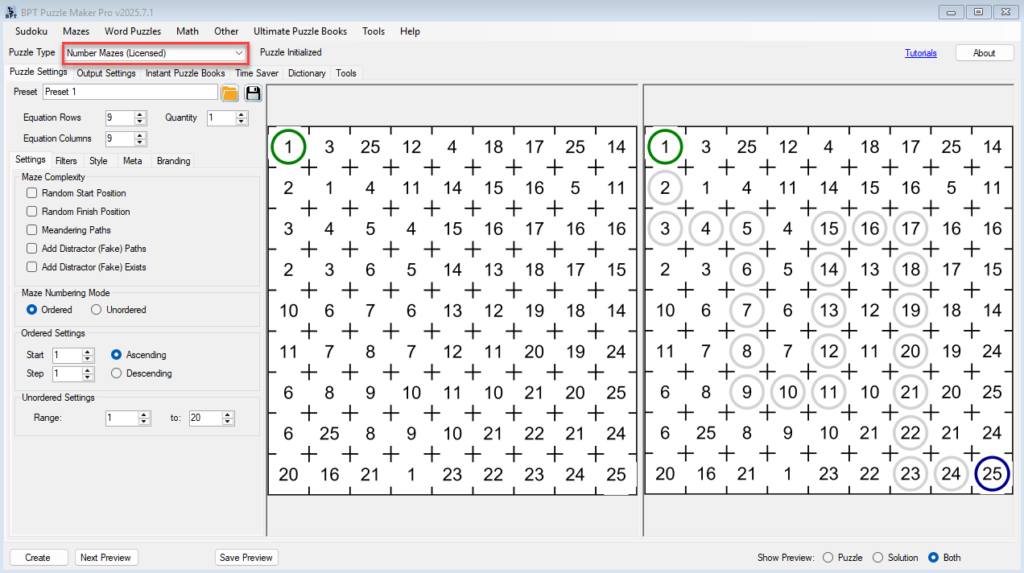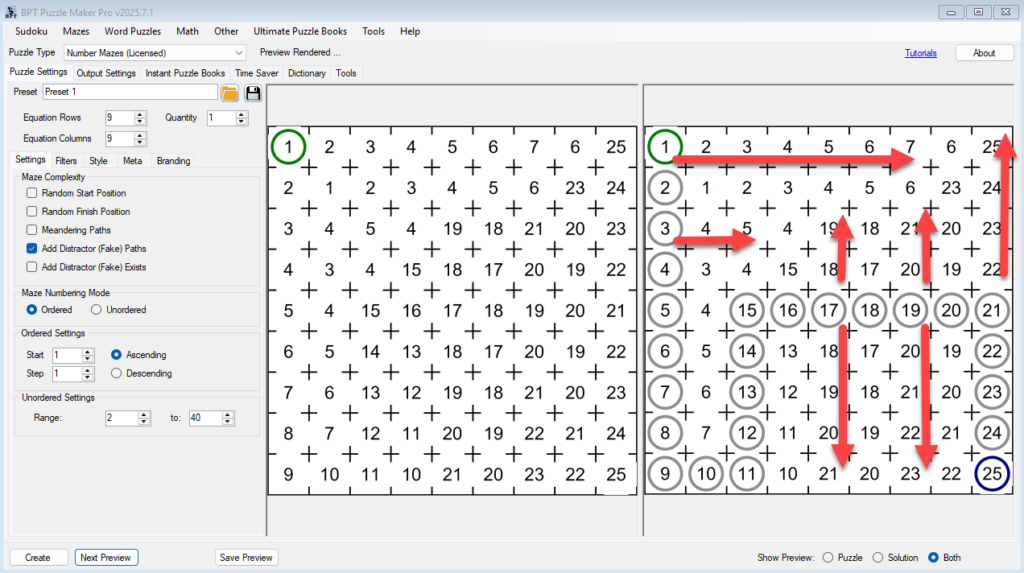Maze Options: Control Difficulty and Meandering Paths
Learn how to control the complexity of your Number Mazes using the built-in Maze Options — perfect for making puzzles more engaging, challenging, or solver-friendly.
🧩 Overview
This tutorial shows how to adjust your maze’s complexity by enabling or disabling meandering paths, fake paths, fake exits, and random start/finish positions. These options dramatically change how the puzzle plays — even when the numbers stay the same.
🧰 Required Module
🔧 Preparation
Before starting:
- Open Puzzle Maker Pro and select Number Mazes from the puzzle module dropdown.
- Go to the Puzzle Settings tab.
- Make sure your base puzzle works — either Ordered or Unordered mode with a valid range and size (e.g., 9×9, Min 1, Max 20).

🪜 Step-by-Step Instructions
1. Turn on Meandering Paths
This makes the path less direct, forcing the solver to zigzag and think.
- Scroll to the Maze Options area (lower left in the Puzzle Settings tab).
- Check the option “Meandering”.
- Click Next Preview.
🔀 The puzzle will now avoid short straight lines — even for simple number sequences. This increases visual variety and challenge.


2. Add Fake Paths (Distractors)
Fake paths look like valid options but lead nowhere — great for visual misdirection.
- Check the box for “Fake Paths”.
- Click Next Preview again.
🔍 You’ll now see realistic-looking alternate paths — but only one leads from start to finish. Solvers must think carefully.

3. Add Fake Exits
This adds multiple “goal” numbers to the grid — only one is correct.
- Enable “Fake Exits” in the Maze Options panel.
- Preview the puzzle again.
🚪 The puzzle now has decoy destinations, not just fake paths. This makes the final goal harder to spot at a glance.

4. Enable Random Start / Random Finish
These options change the puzzle entry and exit points on every generation.
- Check “Random Start” and/or “Random Finish”.
- Click Next Preview to see different entry/exit placements.
🎲 Randomizing makes each puzzle unique — even with the same number set.

✅ Outcome
By using Maze Options, you now know how to:
- Increase puzzle difficulty visually and logically
- Control path complexity and misdirection
- Generate a wide variety of mazes with a single preset
These settings are especially useful when preparing puzzle books, activity sheets, or logic challenges for older solvers.
